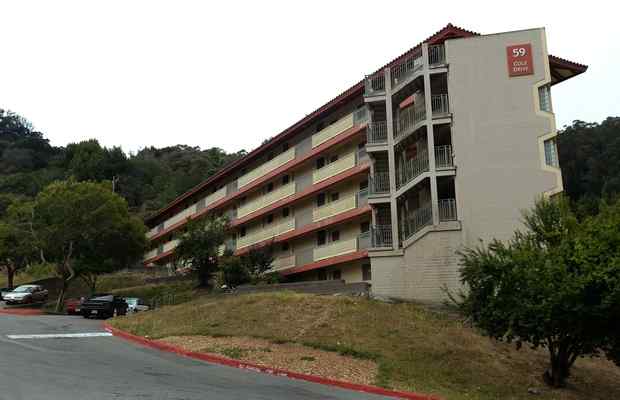Marin City housing plan is a high priority
 Before the 1980s, the federal Department of Housing and Urban Development covered almost all the costs of maintaining public housing. HUD has since radically reduced funding for that purpose across the nation, forcing local housing authorities to become entrepreneurial.
Before the 1980s, the federal Department of Housing and Urban Development covered almost all the costs of maintaining public housing. HUD has since radically reduced funding for that purpose across the nation, forcing local housing authorities to become entrepreneurial.
HUD now provides only $500,000 per year to maintain the six properties — almost 500 housing units — that the housing authority oversees.
While the column blamed Marin Housing Authority, Executive Director Lewis Jordan (since 2013), and the Board of Supervisors for the deterioration of the project, it is the shrunken HUD budget and age and construction of the buildings that are the biggest culprits in the deterioration of Marin Housing Authority’s largest complex.
The Voice’s author contended that the five-year plan Jordan submitted to HUD for 2014-18 was practically the same as the 2010-14 plan submitted by his predecessor. Not so. Jordan’s 2014-18 report shows that the conditions he inherited at Golden Gate Village were much worse than what was reported in 2010.
At the same time, the column’s author failed to recognize what Marin Housing Authority has accomplished over the last few years.
First, authority staff worked with residents to develop “Guiding Principles” for revitalizing the village. The first principle is “Protect Existing Golden Gate Households and Residents,” a mandate to assure that no one be displaced by revitalization efforts. Second, the authority recruited the current executive director, with instructions to improve internal management. Third, Marin Housing Authority charged its new director to convene a Community Working Group to begin a revitalization plan for the village, based on the Guiding Principles.
Marin Housing Authority’s initiatives are working.
In annual reviews for 2014 and 2015, HUD rated MHA a “high performer,” its highest ranking. In 2015 HUD named the housing authority the best-performing housing authority in Northern California! And the Working Group issued its final report in December 2015.
While the recent Voice column correctly noted that the Working Group learned there is $16 million in deferred maintenance, it also found that repairs to the complex will require another $30 million within 10 years, and up to $150 million over the next 50 years. These conditions, the result of the age of the village and reductions in HUD funding beyond the control of our county, cannot be fixed by simply “reprogramming $6 million from Civic Center improvements,” as the column suggests.
The Working Group found most residents to be open to a revitalization process; 57 percent preferred new units with modern design and appliances and most do not want to leave the area as revitalization occurs.
Marin County and Golden Gate Village, like many places in our country, remind us that historic racial segregation continues to impact families to this day. Some village residents feel that impact and are suspicious of massive change.
Marin Housing Authority needs to reaffirm that current residents won’t be displaced as and after the village is revitalized.
But we must also assure fair and equal opportunity in housing throughout the county.
While Golden Gate Village may become a more mixed-income community, which the Working Group confirmed was acceptable to most village residents, we must also create more affordable housing in other parts of the county. Full implementation of fair housing policy and additional affordable housing will benefit Marin County as well as Golden Gate Village residents.
The Working Group’s report is a sign that the Village is indeed a high priority of the authority, but it also shows that putting Band-Aids on deferred maintenance is not a real solution.
By MEHC member Kiki LaPorta
Marin Voice Posted: February 3, 2016
